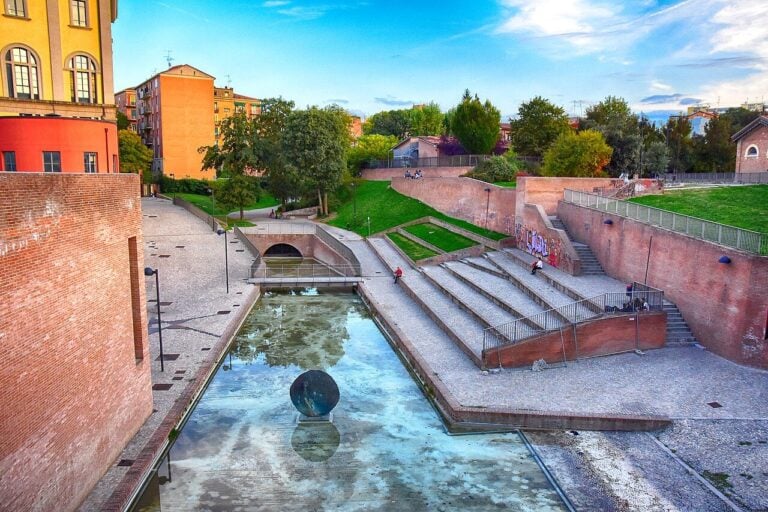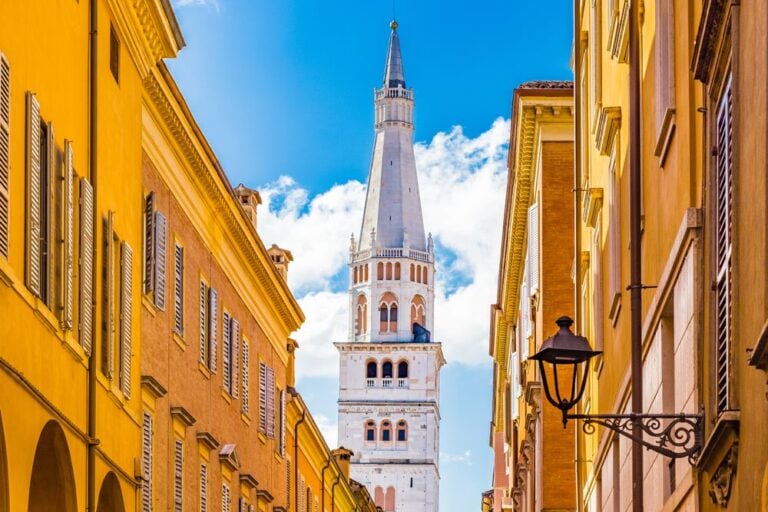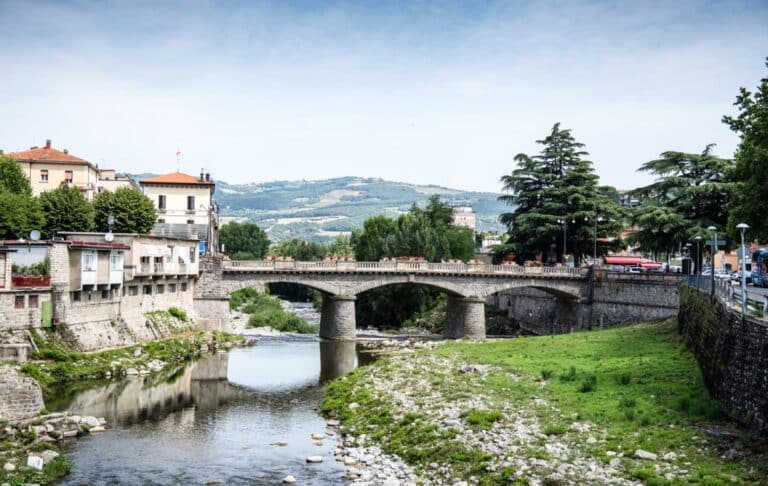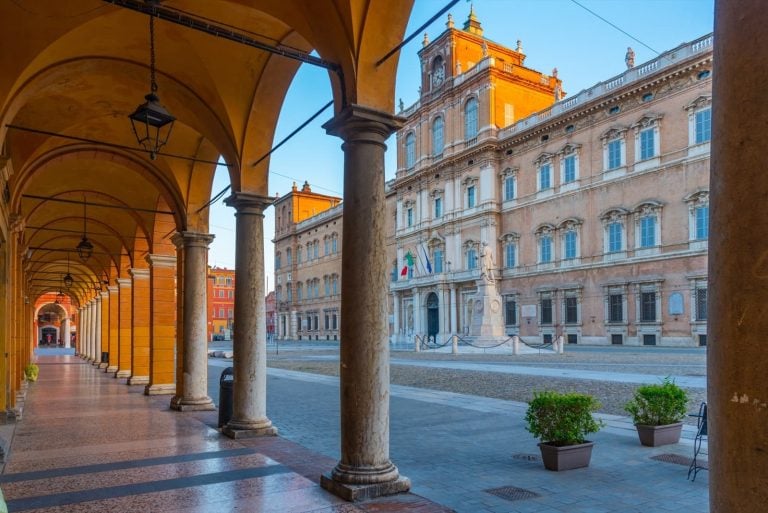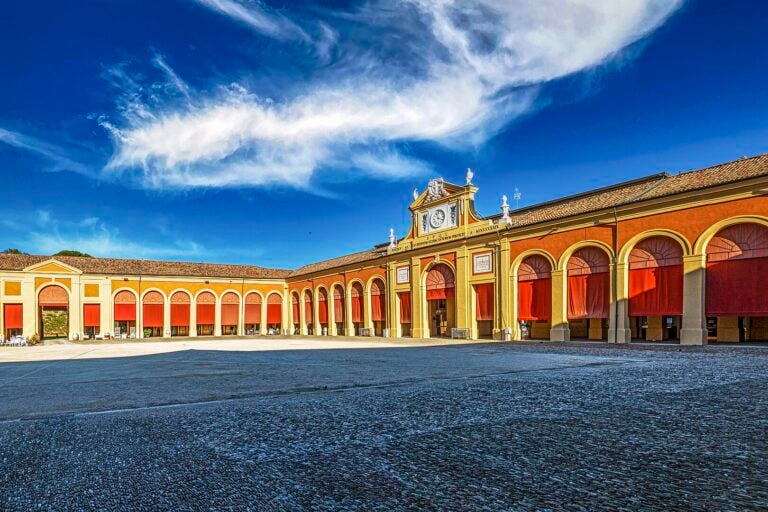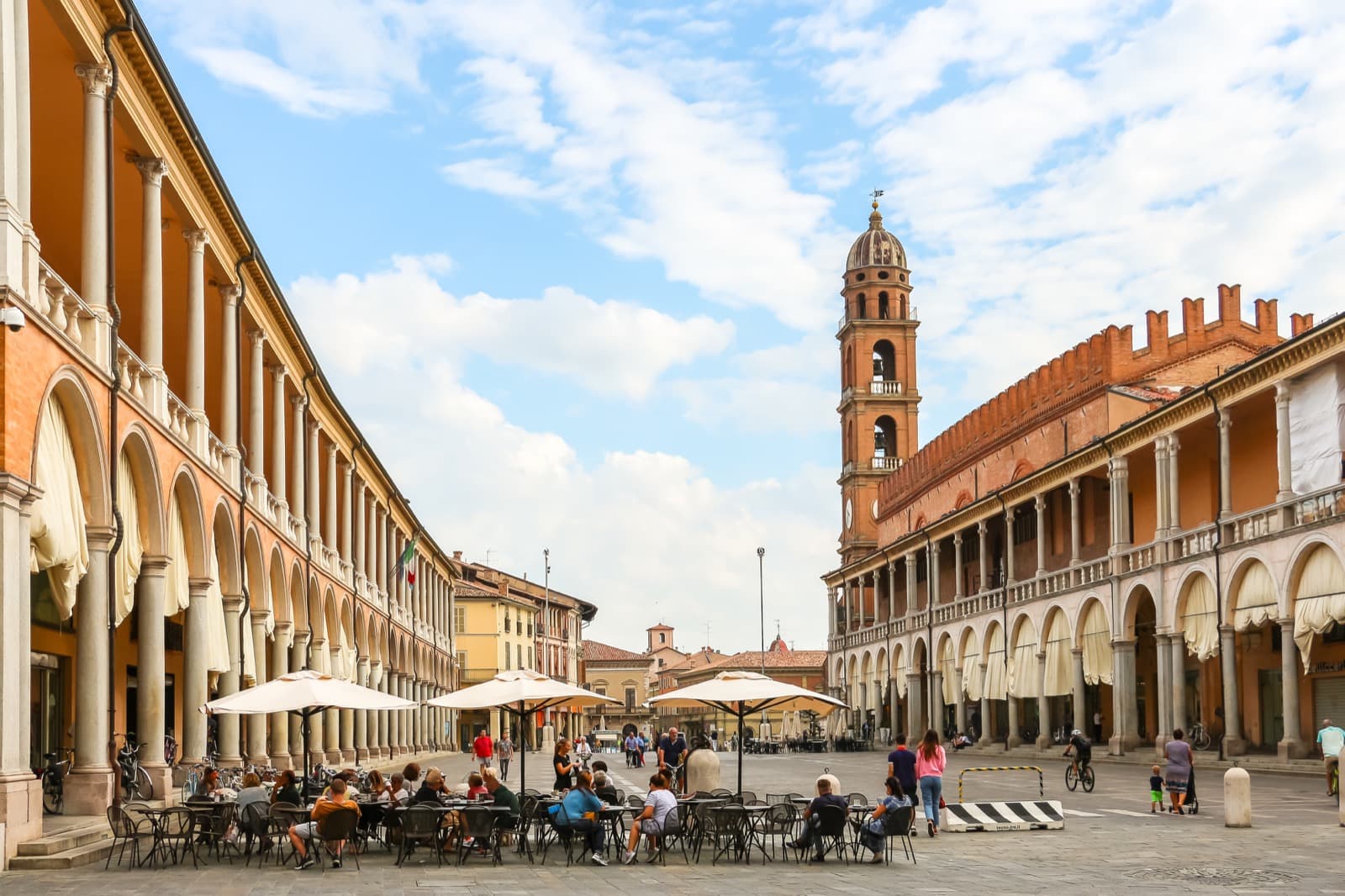
Time
48 h
Exploring Emilia-Romagna by train is a sustainable, convenient and surprising choice that more and more travellers are choosing to try.
Thanks to the regional connections provided by Trenitalia Tper, you can enjoy a weekend between Bologna and Modena – two cities that symbolise the identity of Emilia-Romagna, conveniently connected in about 30 minutes by train – for a weekend of culture, authentic flavours and UNESCO sites.
Here’s what to see in one day in each of the two cities.
First stop: Bologna
The day can only begin in Piazza Maggiore, the beating heart of the city, overlooked by the majestic Basilica of San Petronio and Palazzo d’Accursio. Both are well worth a visit:
- the Basilica of San Petronio is the largest and most important church in Bologna (although, strangely, it is not the city’s athedral, which is located a few metres away on Via Indipendenza); inside, don’t miss the Chapel of the Magi, with scenes representing “Heaven” and “Hell”, and the longest sundial in the world.
- Palazzo d’Accursio has been the seat of the city council since 1336 and houses the Collezioni Comunali d’Arte (Municipal Art Collections). We recommend a visit to the Torre dell’Orologio (Clock Tower), which offers a beautiful view of the city from its two panoramic terraces.
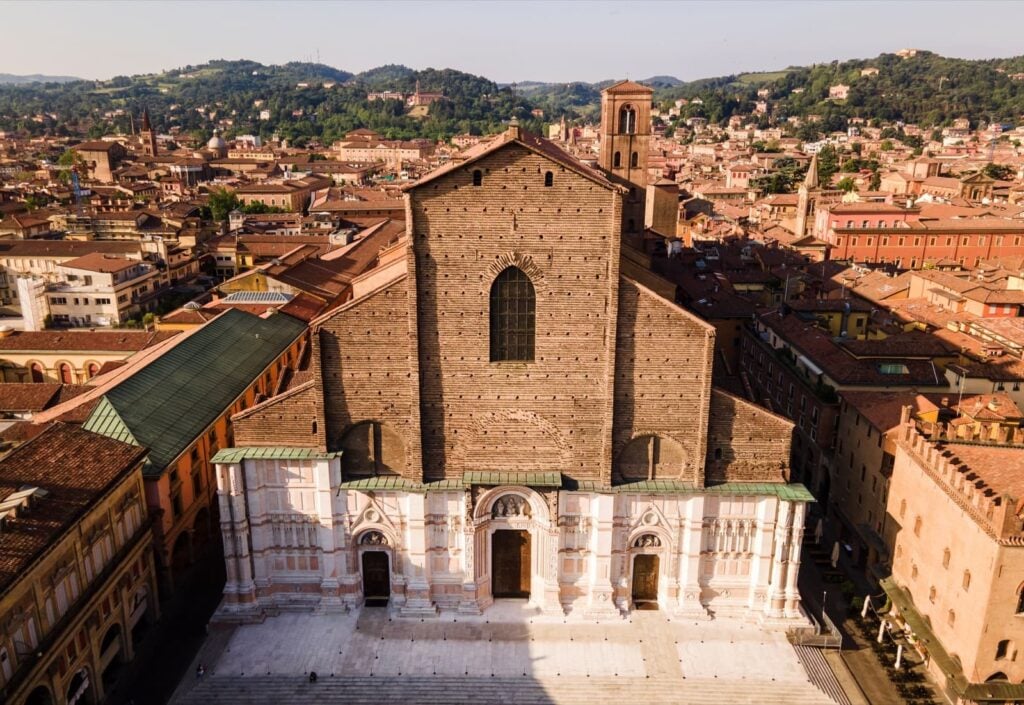
A few steps further on and you reach Piazza del Nettuno, with its famous fountain, one of Bologna’s most beloved (and sideways-glanced-at) symbols. Here, we recommend entering Salaborsa for a glimpse into the layered history of the city (during opening hours) and then, walking along a stretch of the famous UNESCO porticoes, reaching the Due Torri, Bologna’s medieval symbol.
Lunch break in a trattoria in the centre to taste classic fresh Bolognese pasta, such as tortellini in broth, tagliatelle with ragù and lasagne, accompanied by a glass of Pignoletto or Rosso dei Colli Bolognesi.
In the afternoon, the tour of the city continues with a walk through the ancient Jewish ghetto, before reaching Piazza Santo Stefano, where you will find the basilica of the same name, known as the Complesso delle Sette Chiese (Complex of the Seven Churches), because it is composed of several places of worship built in different eras.
Returning towards Piazza Maggiore, a detour under the Portico del Pavaglione leads to the Palazzo dell’Archiginnasio, the historic seat of the University of Bologna. Entering the porticoed courtyard, whose vaults are frescoed with the coats of arms of the masters and students who have attended the Alma Mater Studiorum over the centuries, one breathes a solemn yet welcoming atmosphere.
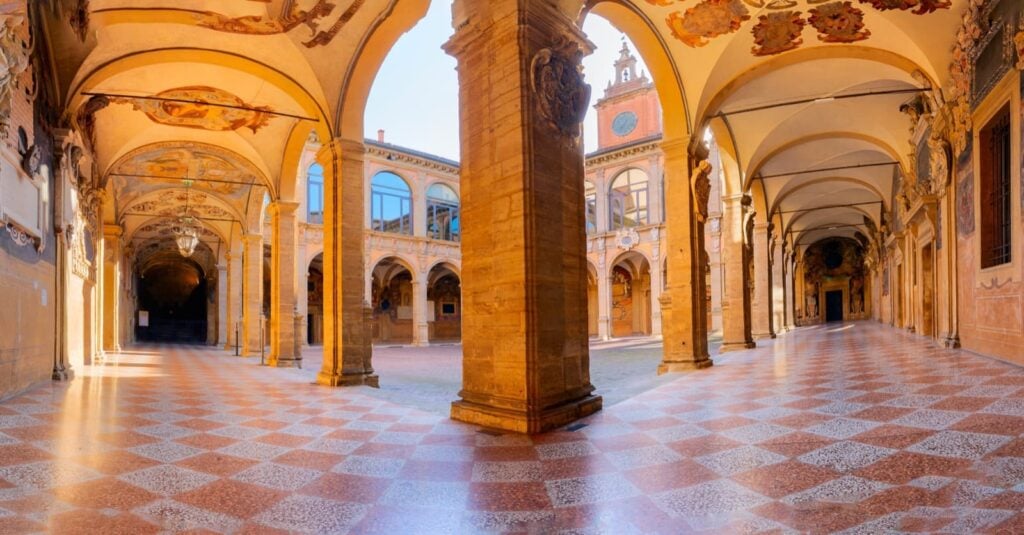
If you still have time, we recommend visiting one of the many museums in the city, depending on your preferences, such as:
- the Museum of the History of Bologna, housed in the historic Palazzo Pepoli, which tells the story of Bologna and its transformations, from Etruscan Felsina to the present day.
- The MAMbo, Bologna’s Museum of Modern Art, with works from the second half of the 20th century to the present day, and the adjacent Morandi Museum, dedicated to the famous Bolognese painter.
- The Civic Archaeological Museum, housed in the 15th-century Palazzo Galvani, with works and finds from various periods of ancient history, but famous above all for its Egyptian collection, the third largest in Italy and one of the most important in Europe.
Finally, an aperitif in Via del Pratello or Via Belvedere, among bars, food shops and taverns, will allow you to enjoy the atmosphere of the city at sunset, like a true Bolognese.
Second stop: Modena
From Modena train station, it takes about 15-20 minutes on foot to reach the historic centre and, in particular, the splendid Piazza Grande, declared a UNESCO World Heritage Site, with its imposing cathedral and Torre Ghirlandina, symbols of the city’s civic and religious identity.
- the Duomo, a masterpiece of European Romanesque architecture, was begun in 1099 based on a design by the architect Lanfranco and decorated by the sculptor Wiligelmo; its sculptures recount numerous biblical episodes in an expressive and innovative style, but that’s not all: some creations refer to works or tales, such as the unusual archivolt carved with the story of King Arthur of Brittany.
- La Ghirlandina is the 86-metre-high civic bell tower, from the top of which you can enjoy a spectacular view of the city and its surroundings (info and ticket booking).
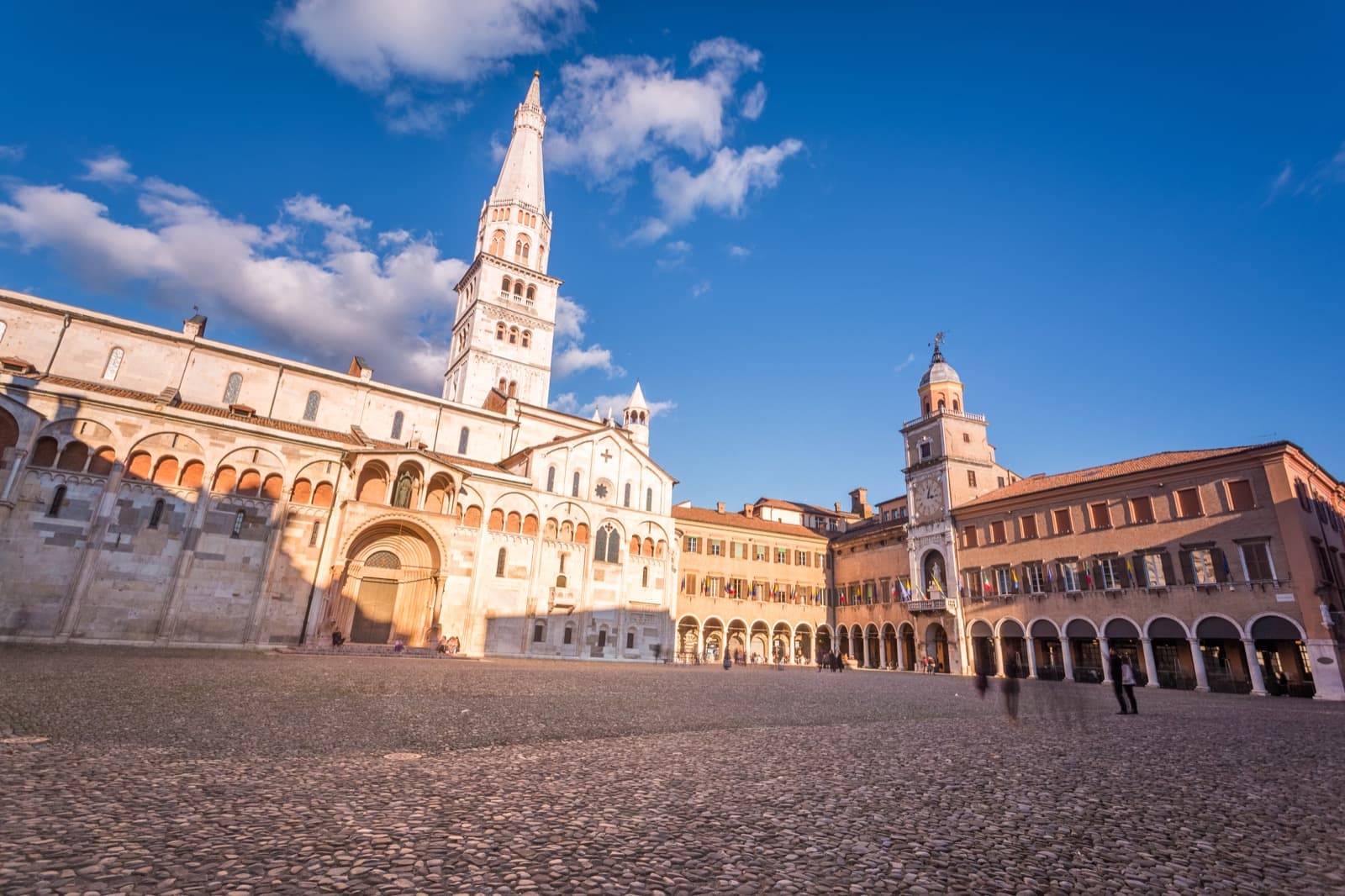
Piazza Grande is also home to the Palazzo Comunale, a 17th-century complex comprising a series of buildings constructed for various purposes in medieval times. Inside, in addition to the beautiful historic rooms, is the Acetaia Comunale, which is well worth a visit to discover the secrets of Modena’s famous black gold, traditional balsamic vinegar PDO, on a guided tour.
At this point, to whet your appetite even more, you can head to the historic Mercato Albinelli, a few steps from Piazza Grande, where you can find the best local products and then finally sit down in one of the many taverns in the centre of this city renowned for its gastronomy. Don’t miss classics such as gnocco fritto and crescentine (also known as tigelle) and traditional fresh pasta such as tortellini in broth, stuffed tortelloni and rosette, accompanied by a good local Lambrusco.
To aid digestion, we recommend a stroll to Piazza Roma, overlooked by the majestic Palazzo Ducale, which is only accessible by appointment with a guided tour as it is the headquarters of the Military Academy.
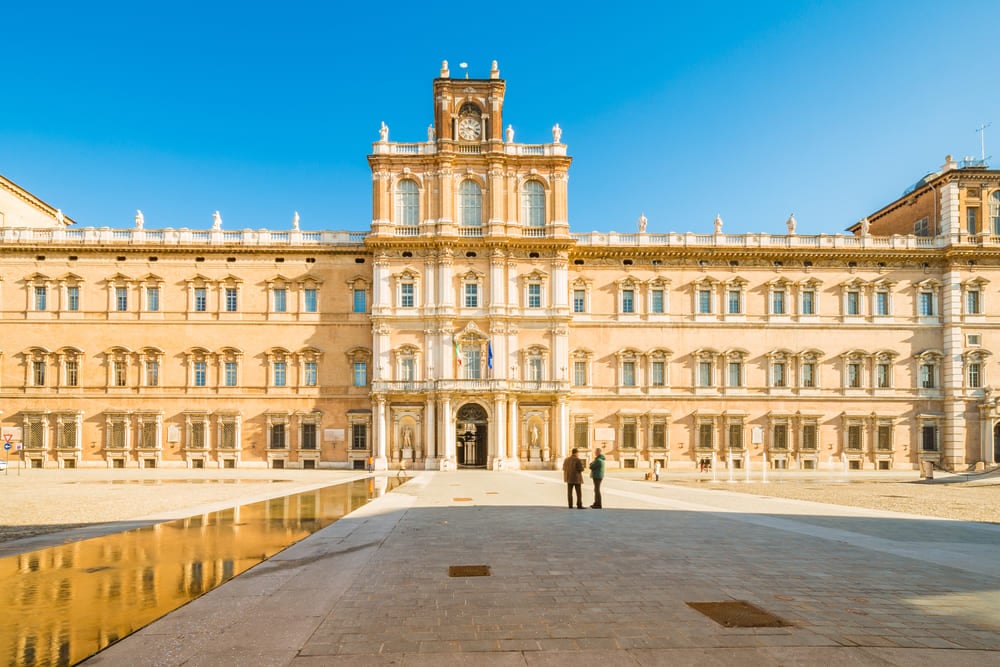
Then you can choose between a visit to the MEF – Enzo Ferrari Museum, which recounts the life of the founder of the Prancing Horse through an immersive journey (interesting even for those who are not car enthusiasts), or a visit to the Palazzo dei Musei, which houses numerous collections including the Galleria Estense, one of the oldest and most important art galleries in Italy, and the Lapidario Estense, whose monumental artefacts tell the story of Modena, from the founding of the Roman colony to the 19th century.
To end the day, a relaxing stroll in the Giardini Ducali park or along Via Emilia is ideal before returning home by train.
Author
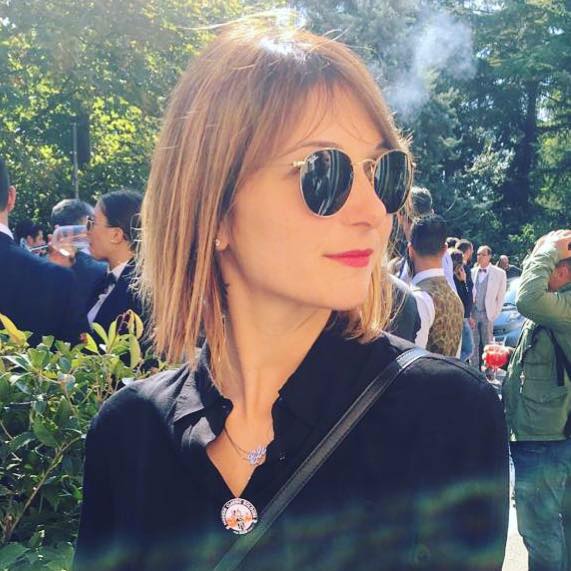
Elisa Mazzini
Social Media Manager for @inEmiliaRomagna and full-time mom.
You may also like
Bologna on foot, what to see in 10 unusual stops
by Maria Grazia Masotti /// August 7, 2025
Modena on foot, what to see in a 10-stage tour
by Maria Grazia Masotti /// June 3, 2025
By train between villages and castles
by Elisa Mazzini /// December 23, 2024

Interested in our newsletter?
Every first of the month, an email (in Italian) with selected contents and upcoming events.
